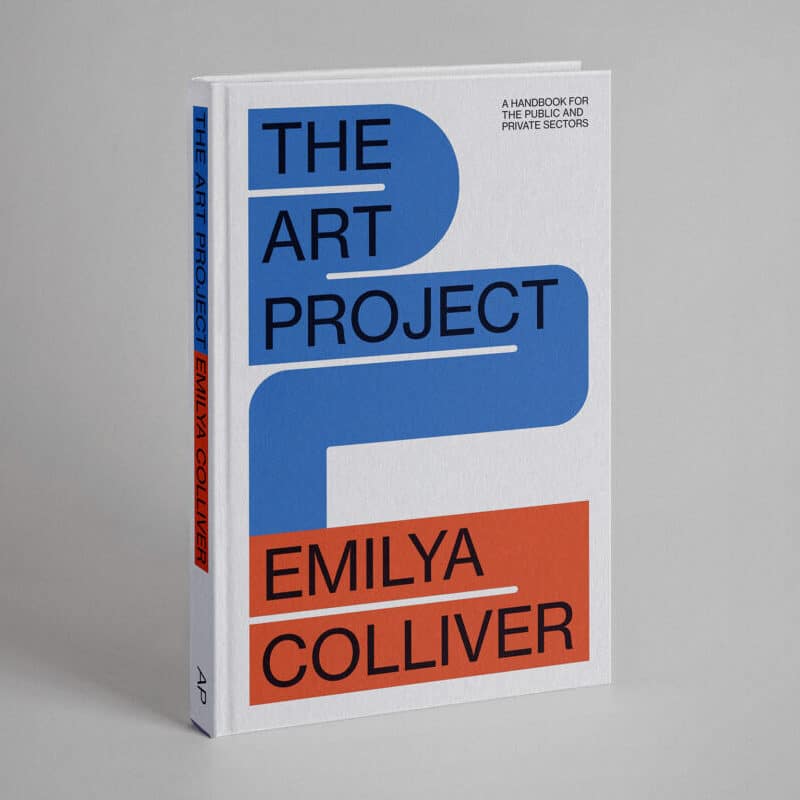‘The Art Project: A handbook for the public and private sectors’ by Emilya Colliver was inspired by the author’s ambition to ‘create a catalyst for change in the small and tightly guarded art world’ outside of which there is a lack of education or standard practice when it comes to working with artists in a corporate setting or commissioning artists to work on developments.
The handbook conveys a clear message of the benefits of commitment, collaboration and communication and stresses that while the planning and administration of projects is important, being able to explain the “why”, the “what’s it good for”, articulate value and show us the return on investment is critical – you must tell the story of living with art.
Some people don’t know where to begin with art whether in the home, the office or public space. It can feel supplementary to space rather than integral; too hard, so never mind. Colliver has canvassed this in her first title Making Art Matter. The Art Project scales up this predicament and provides a practical path for including art in daily life.

The Art Project covers the minutiae that eventually can become a mental checklist but is excellent to have listed and briefly explained in one place for those learning or getting a refresh before a new project. The small parts of the whole include; framing, licensing, transportation, photography, studio visits, budget, hanging the art, wall texts and labels, record keeping, maintenance reporting, insurance … and the list goes on, for readers of the book. She summarises each chapter with “golden points” for quick reference, and to embed the lessons. The information is delivered in a ‘textbook’ like manner with a step-by-step approach for planning. The handbook is comprised of 6 sections outlining ‘what is an art project?’ to the team required for success, the steps, and the potential ‘legacy’ or outcomes of a project.
As she mentions in the foreword anyone can call themselves an ‘art consultant’ it requires no formal education, though of course that helps, and as such this book serves as an educational reference and starting point for those interested in facilitating art projects and artists in the commercial realm. Colliver considers some bigger picture ideas such as place making and biophilic design as well as shares case studies and real-world examples which help to enliven the procedures discussed.
Overall the design of the book is contemporary with bold headings, easy to digest ‘pull-quotes’ and pops of colour to clearly book-end the chronological steps of working on a project, some titles are difficult to read which ironically parallels the sometimes obfuscating nature of the art world. That aside, all other interior design pages are engaging and relay the message well.
The book echoes what it would be like to work as Colliver has done from day dot to doing successful business in art. Colliver says that a lot of her knowledge has been on the job learning, this requires that you’ve had opportunities to learn, a forthcoming teacher or mentor and an array of experiences; a privilege that then seeds opportunity. Therefore it is collegial of Colliver to share and collate this information in an accessible format that doesn’t rely upon the reader doing an internship, working an entry level job, volunteering, or already having a foot in the door from friends or family.
There are of course existing guides to curating which are useful and have an international lens, such as Adrian George’s The Curator’s Handbook, Seven Days in the Art World by Sarah Thornton and Ways of Curating by Hans Ulrich Obrist. But it’s rare to find this kind of text with a contemporary Australian outlook. The Art Project offers current and applied advice on the business of connecting clients and audiences to art.
Sometimes these bones can be overlooked to laud the loftier goal of a ‘transformative’ or ‘genius’ art experience, but we shouldn’t forget if the art isn’t there in the office or public space in the first place, or the artist isn’t paid properly to do so, these moments of awe don’t happen!
You can purchase ‘The Art Project’ here. It is a great resource, as intended by the author, ‘to educate organisations, developers and council workers; to encourage them to select the right person to steer and champion their creative project.’